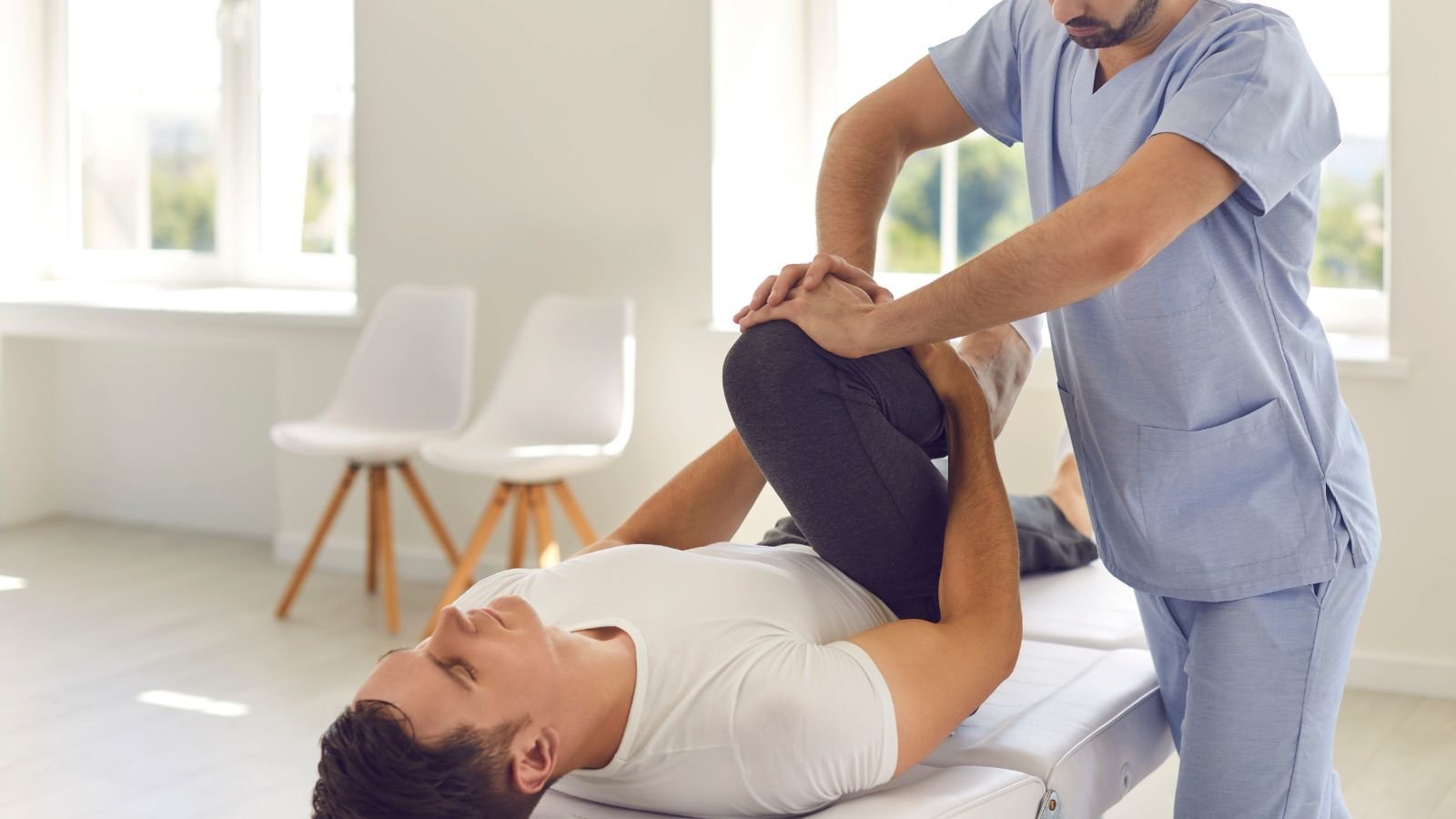Most people think of osteopathy as something you try when your back’s acting up or your joints won’t cooperate. But there’s a lot more to it than just treating pain. At its core, osteopathy looks at how your whole body works together; not just bones and joints, but muscles, nerves, and circulation too.
It’s a hands-on approach that can help you feel more balanced, move better, and stay ahead of issues before they turn into bigger problems. Think of it less as a quick fix, and more as part of your ongoing health routine, like exercise, stretching, or eating well.
In this blog, we’re getting into how osteopathy supports full-body wellness (even when you’re not sore) and why more people are turning to it as part of their long-term care. In clinics like Tonic Physio, osteopathy often works alongside other forms of care, including physiotherapy and massage, to support long-term mobility and recovery. Osteopathy for whole body health is one of those quiet but powerful tools that more people are using not just to feel better, but to stay well in the first place.
What Is Osteopathy? Understanding the Full-Body Approach
Osteopathy is often associated with pain relief: a sore back, a stiff neck, or maybe a sports injury that just won’t quit. But its real value lies in something much broader: keeping the entire body in balance. Osteopathic treatment isn’t just reactive; it’s proactive. It’s about making sure your body moves well, functions better, and stays that way long term.
Here’s how that plays out in real life:
1. Whole-Body Movement Matters More Than You Think
You may not realize how connected everything is until something goes off. A misaligned pelvis can quietly affect how your knees track. That, in turn, could change your walking pattern, leading to tight calves, hip pain, or even tension in your lower back. Osteopaths look at these links. Instead of chasing symptoms, they look at how your entire musculoskeletal system is working together (or not).
This is especially valuable if you’re someone who trains regularly, works on your feet, or even just spends long hours at a desk. Instead of waiting until something breaks down, osteopathic treatment can help restore balance early, so you’re not constantly playing catch-up with your body.
2. It’s Not Just Physical: Stress and Lifestyle Play a Role Too
Osteopathy doesn’t separate the body from the rest of your life. Stress, poor sleep, and heavy workloads all show up physically. You may notice this as shallow breathing, tight shoulders, or a general sense of fatigue that doesn’t go away. Osteopaths often work with the nervous system and lymphatic flow, helping to release tension, support circulation, and reduce that low-level strain your body’s been quietly holding on to.
This approach is what makes osteopathy so useful as part of a wellness routine. It’s not just about “fixing something.” It’s about supporting your body through all the things you’re asking it to do and keeping it resilient.

How Osteopathy Works: A Whole-Body Approach to Care
One of the things that sets osteopathy apart from other therapies is how personalized it is. There’s no standard routine or “one-size-fits-all” method, because no two bodies are the same. Instead, osteopathy for whole body health begins with understanding you: how your body moves, where it holds tension, and how your day-to-day life may be affecting your physical balance.
At your first session, a practitioner doesn’t just look at the area that hurts. They assess your posture, movement patterns, breathing, muscle tone, and even how your body reacts to gentle pressure or positioning. They’ll also ask questions about your medical history, daily habits, stress levels, and any past injuries. This full-body evaluation helps uncover subtle restrictions or imbalances that may be interfering with your overall well-being, even if they haven’t shown up as symptoms yet.
Top Osteopathic Techniques for Pain Relief & Mobility
Once a practitioner understands what your body needs, they’ll use a range of hands-on techniques to support balance, alignment, and better function. These methods are gentle but effective and tailored to how your body responds. Common techniques include:
- Myofascial Release: This technique targets the fascia – the connective tissue that surrounds muscles and organs. If your fascia becomes tight or restricted, it can limit movement and contribute to pain. Myofascial release uses sustained pressure and stretching to soften these areas and restore fluidity.
- Joint Mobilization: Unlike forceful manipulations, joint mobilization uses slow, controlled movements to improve range of motion and reduce stiffness. It’s particularly helpful if you feel “stuck” or restricted in certain parts of your body, such as the hips, shoulders, or spine.
- Visceral Manipulation: Osteopathy also pays attention to the organs and how they interact with surrounding tissues. Gentle work around the abdomen and chest can help improve organ mobility and function, which in turn supports digestion, breathing, and circulation.
- Cranial Osteopathy: This very subtle technique works with the natural rhythmic motion of the cranial bones and the nervous system. It’s often used to calm the body, regulate stress responses, and restore balance, especially in people dealing with chronic fatigue, headaches, or high stress.
Each technique is chosen based on what will help your body feel more balanced and capable of self-regulation. The goal isn’t just to chase symptoms, but to improve your system’s overall efficiency, making osteopathy a great tool for long-term maintenance and not just pain relief.
Why This Matters for Long-Term Wellness
When your body moves freely and everything is working in sync, you tend to feel better: physically, mentally, and emotionally. Osteopathy helps restore this balance. By improving alignment, reducing unnecessary tension, and supporting circulation and nerve flow, it make it easier for your body to handle life’s daily demands without slipping into dysfunction.
That’s why osteopathy for whole body health isn’t about waiting for pain. It’s about staying ahead of it.

When to See an Osteopath (Even Without Pain)
Most people wait until their body is screaming for help before they seek treatment. But what if care didn’t always have to be reactive?
Osteopathy isn’t just for injury recovery; it’s a proactive tool for keeping your body in balance before things go off track. You don’t have to be in pain to benefit from treatment. Many people see an osteopath regularly to stay ahead of stiffness, improve posture, and keep their joints and muscles moving freely.
Subtle Signs Your Body May Be Asking for Support
It’s not always about pain; sometimes it’s the small signals we ignore:
- Feeling “off” after a workout or a long workday
- Waking up with stiffness that lingers
- Digestive discomfort that won’t go away
- Constant tension in your neck, shoulders, or hips
These aren’t necessarily problems yet, but they can be red flags that your body is compensating for deeper imbalances. Osteopathy helps untangle those patterns early, before they lead to injury or chronic discomfort.
Think of It Like Preventive Maintenance
You wouldn’t wait until your car breaks down to get an oil change, right? The same mindset applies to your body. Regular osteopathic sessions help support alignment, reduce muscle strain, and promote better blood flow, keeping everything working like it should.
This kind of proactive care is something we believe in at Tonic Physio. Osteopathy for whole body health here isn’t just about treating sore spots, it’s about keeping your body moving well, even during the times when nothing feels wrong. For a lot of people, regular sessions help with everyday stiffness, tension from work or workouts, or just feeling more balanced overall.
How Osteopathy Supports the Body’s Natural Balance
When everything in the body is connected, one small imbalance can throw off how you feel day-to-day, even if it’s something you wouldn’t think twice about, like a tight hip or stiff neck. Osteopathy takes a full-body view. Instead of zeroing in only on the pain point, it looks at how your muscles, joints, and connective tissues all interact.
This is especially useful for people who don’t have a clear injury but still feel “off.” Maybe it’s a constant tension that creeps in after long hours at a desk, or that general sluggishness after a tough week. With hands-on techniques like joint mobilization and gentle manipulation, osteopathy helps the body release tension, restore alignment, and support better movement patterns, all of which contribute to long-term health and injury prevention.
Take Jamie, for example: a regular runner who wasn’t injured but noticed an ongoing tightness in his lower back that made training less enjoyable. A few osteopathic sessions revealed restrictions in his hips and thoracic spine that were throwing off his stride. With treatment and a few mobility tweaks, not only did the tightness ease, but his runs felt lighter and smoother.
That’s the kind of preventative, whole-body benefit many people experience. It’s not just about reacting to pain, but it’s about creating better balance so that discomfort is less likely to happen in the first place.
Osteopathy vs Physiotherapy: How They Work Together
Osteopathy and physiotherapy often work hand in hand, especially when the goal is to maintain long-term mobility, function, and overall well-being. While physiotherapy may focus on specific injuries, recovery protocols, or strengthening programs, osteopathy supports the bigger picture. It looks at how the body’s systems work together and helps relieve restrictions that might be limiting progress.
For example, if you’re recovering from a shoulder injury with a physiotherapist, an osteopath can work on related tension in the ribs, neck, or spine that’s affecting your posture or movement.
At Tonic Physio, our team often blends these approaches to create more complete care plans that help your body heal and stay resilient.

Osteopathy as Preventive Care: Staying Ahead of Discomfort
Most people wait until their body sends a clear signal, a pulled muscle, a stiff neck, a sharp pain, before seeking help. But what if the goal wasn’t just to fix discomfort, but to avoid it altogether?
Osteopathy works exceptionally well as a preventive practice. By identifying and addressing small imbalances, postural strain, or restricted movement early on, osteopathic care helps keep your body functioning at its best, before it ever hits a breaking point.
For example, someone with a desk job might not notice the subtle shifts in posture caused by long hours of sitting until it results in chronic neck tension or lower back pain. Regular osteopathic check-ins can help correct those patterns early, improving comfort, mobility, and energy levels.
People who stay active, runners, cyclists, and weekend hikers, often benefit from ongoing osteopathic care too. It helps manage wear and tear, encourages quicker recovery, and supports the body’s natural alignment and rhythm. Even those simply feeling “off” or out of sync can find that gentle osteopathic work restores a sense of ease and balance they didn’t realize they’d lost.
At Tonic Physio, many clients come in not because they’re injured, but because they want to stay that way. Osteopathy here isn’t about chasing symptoms; it’s about maintaining freedom in movement and confidence in your body day to day.
You don’t have to wait until something hurts to take care of your body. Osteopathy offers a gentle, proactive way to stay in tune with how you move, feel, and function, every day. Small check-ins now can help you feel better long term.
When your body feels supported, everything else gets easier.
Frequently Asked Questions
What is osteopathy used for if I’m not in pain?
Osteopathy for whole body health focuses on improving movement, reducing tension, and supporting your nervous system, even when you’re not injured.
How often should I see an osteopath for maintenance?
It depends on your body and lifestyle, but many people benefit from monthly or seasonal check-ins to keep things running smoothly.
Is osteopathy the same as physiotherapy?
Not exactly. While both focus on physical health, osteopathy for whole body health takes a whole-body approach with hands-on techniques that target structural and internal balance.
Can osteopathy help with stress and fatigue?
Yes, gentle osteopathic techniques can help regulate your nervous system, ease physical tension, and support overall energy and well-being.







